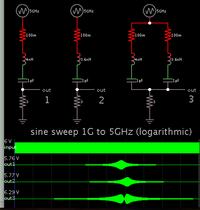borgmater
Newbie level 4
Hello everyone ! Im kinda new to this forum, but ive been watching posts for some time and i think the information here are amazing  So i thought i give it a go.
So i thought i give it a go.
Im designing a diplexer within frequencies 2500-2570 and 2620-2690 MHz with band pass filters in microstrip technology, Agilent ADS 2015.01. I have designed BPFs separately, but i dont know how to join them in the simplest way possible, without using additional components ? Any advance is appreciated
Im designing a diplexer within frequencies 2500-2570 and 2620-2690 MHz with band pass filters in microstrip technology, Agilent ADS 2015.01. I have designed BPFs separately, but i dont know how to join them in the simplest way possible, without using additional components ? Any advance is appreciated
